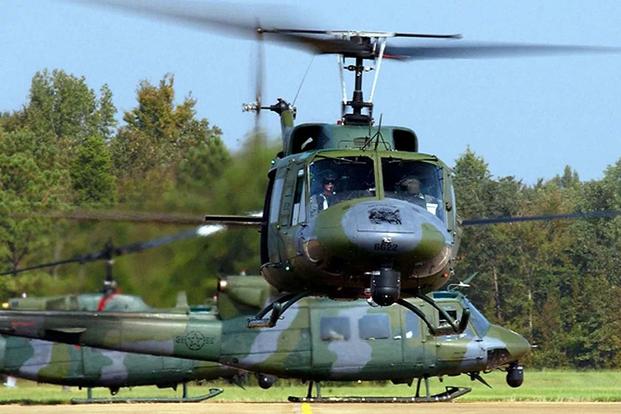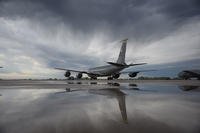For the head of U.S. Strategic Command, a new helicopter for missile sites is not only a necessity, it's long overdue.
"We are going to get a new helicopter in the missile fields," Air Force Gen. John Hyten said Wednesday during his opening remarks at the 2018 STRATCOM Deterrence Symposium in Omaha, Nebraska. "We are going to get a new helicopter if I have to die trying or if I have to kill somebody to do it."
The UH-1N Huey replacement program, intended to give the Air Force a new helicopter to guard its missile sites, has been in the works for more than a decade.
"It is taking way too long," Hyten said.
Related content:
- Lawmaker Bashes Delay on Huey Replacement Program
- Budget Bill Dramatically Boosts Funding for Huey Replacement Program
- Air Force's Huey Replacement Program Proposal Pushed Back
Over the last few years, airmen at the 90th Missile Wing at F.E. Warren Air Force Base, Wyoming, have kept the current Huey helicopters flying through copious amount of maintenance and upkeep, Hyten said.
"That Huey is now armed," he said. "That Huey can now refuel out in the missile fields. That Huey can do things that just a few years ago it couldn't because we knew it was taking too long for us to get the helicopter. And so [Commander of Air Force Global Strike Command] Gen. Robin Rand and the folks at Global Strike Command [and others] went to work, and they turned that into a real, capable, lethal weapons system."
The UH-1Ns, some of which entered the Air Force's inventory in 1970, support five commands and numerous missions, including operational support airlift, test support, and Intercontinental Ballistic Missile security support.
Since the Air Force issued its first request for proposal for a helicopter replacement in December 2016, the program has seen highs and lows.
The service moved forward with the Huey replacement effort in April 2017 when it released its next draft RFP to "continue dialogue with industry to ensure final RFP release this summer and contract award in FY18," officials said at the time. As part of the 2017 $1 trillion omnibus spending bill, lawmakers gave $75 million toward the program, bumping the final bill adjustment to $93.3 million, according to budget documents. (The 2016 request asked for only $18 million.)
The process was soon tied up in a pre-award protest, however, when Sikorsky, a subsidiary of Lockheed Martin Corp., filed a pre-emptive opposition in February involving technical data rights, which it would have to turn over to the Defense Department if the company's helicopter, the HH-60U, won the competition, according to a Defense News report. The Government Accountability Office dismissed Lockheed's suit in May.
The contract award could be announced this fall. However, unless Congress appropriates more funding for the program, the contract timeline may slide again, Defense News reported. Because current funding would run out before the next fiscal year begins, the Air Force may have to wait until fiscal 2020 for the contract award to take shape, Defense News said.
The service had hoped to get new helicopters on its flightlines in 2020. It hopes to buy 84 UH-1N replacement aircraft.
Sikorsky-Lockheed is pitching a semi-modified HH-60U for the replacement; Boeing Co. is offering an MH-139 helicopter variant, based on Leonardo-Finmeccanica's AgustaWestland AW139; and Sierra Nevada Corp., will pitch upgraded Army UH-60Ls.
"The modernization programs that we have to do have to be there for the security of this nation," Hyten said Wednesday, adding that the U.S. owes it to the soldiers, sailors, airmen and Marines doing global operations today.
"They should have the best equipment and best capabilities that the nation can deliver. And if we don't do that, that's failure," he said.
-- Oriana Pawlyk can be reached at oriana.pawlyk@military.com. Follow her on Twitter at @Oriana0214.










